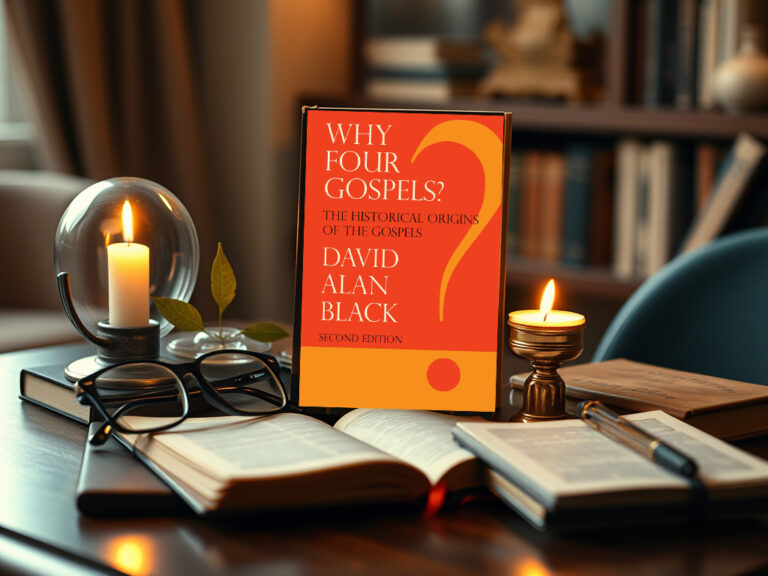Mark’s Unsatisfying, but Compelling Ending
by Drew Smith
To understand the distinctive nature of Mark’s resurrection story, or, as some have suggested, an empty tomb story, we have to deal first with where exactly this Gospel ends. Anyone picking up a good English translation of the Bible can turn to the 16th chapter of Mark and find that verses 9-20 are bracketed off and the reader is directed to a note that generally reads, “Some of the most ancient authorities end the book at 16:8.” This means that the best textual sources available to us have the Gospel of Mark ending in 16:8, while other sources include verse 9, and still others go all the way to verse 20.
This is all too complicated to discuss here, so I will simply state what has become the majority consensus on this issue. Although there are still some very reputable scholars who think differently, the overwhelming number of scholars of Mark believe that the Gospel ends at 16:8. Of course, there is the very slim chance that there was an ending that has been lost, but we have no evidence of this.[1]
It is easy to see why the precarious verses that follow 16:8 would have been added later. All we have to do is read 16:8, where we discover that the women who go to the tomb, where they are told to go tell his disciples to go to Galilee, actually leave the tomb in great fear and they tell no one. Moreover, and perhaps even more troubling, the resurrected Jesus does not appear again in Mark’s story. And so, perhaps it is better to call this an empty tomb story.
This ending must have been very unsatisfying to someone who felt the need to add a more interesting ending, one in which the disciples are told of Jesus’ resurrection and the resurrected Jesus does appear. In fact, Matthew and Luke, who write after Mark, but who generally follow Mark’s outline, were both unsatisfied with Mark’s ending, and thus they included appearances of Jesus after his resurrection.
But if the ending of Mark is at 16:8, why would the author end the story here without including something other writers felt was needed?
Of course, we cannot travel back in time to talk to the author of this narrative we call the Gospel of Mark. Indeed, Mark may not even be the author’s name. Church tradition ties Mark to this Gospel, but the story never mentions that he is the writer. But we can read what is there in the last chapter of the story and propose some reasons why the narrative ends at 16:8 and what this might mean for our own faith and discipleship.
While having the women leave in fear and tell no one is problematic for us, and while not having the resurrected Jesus appear in the story is even more difficult for us, these may really be the best clues we need to solve the problem of why Mark’s Gospel ends at 16:8 as it is understood within the framework of Mark’s overall narrative.
First, although Mark does say that the women were afraid and told no one, we must assume that the message of the young man in the tomb did get out somehow. After all, we are readers of Mark’s story, and thus the message was passed on. Since only the women go to the empty tomb and none of the male disciples receive the message directly from the young man at the tomb, we can be fairly certain that these women told someone, even if this is not included in the story itself.
As to their fear, we should take a close look at similar responses to numinous experiences throughout Mark’s story. Responses of awe, wonderment, and fear characterize the way many characters react to Jesus’ miracles in the narrative. The women’s fear is not a fear as if they are scared from a threat, although that is possible. Rather, they have experienced something from beyond the realm of creation; the in-breaking of God.
Concerning the missing Jesus, while Matthew and Luke, as well as John, were concerned with this problem, Mark is not worried the least about this. In fact, the absent Jesus works well for his story.
What we should understand is that Mark’s story is not about believing in Jesus’ resurrection. It is about how one follows Jesus. It is a story about following Jesus in discipleship; perhaps even a manual on discipleship.[2]
Indeed, we should notice that this Gospel does not begin with a birth narrative, as do Matthew and Luke. Instead, Mark begins with the baptism of Jesus. Thus, Mark’s story begins at the place where Christian discipleship begins, baptism, and takes us through the life of Jesus, a life defined by challenging the religious and political powers. In this way, Mark’s Jesus is the paradigmatic disciple, who proclaims God’s rule of justice, and who, in doing so, takes up his cross unto death.
The message the young man tells the women, “He is going ahead of you into Galilee,” is a commission to return to the road of discipleship, where one continually follows Jesus to the cross. Thus, Mark’s resurrection story is not so much a promise of what is to come, nor does believing the story require us to believe that Jesus was actually physically raised; again, he never appears again in Mark. Rather, the resurrection or empty tomb story is a story that empowers us to perpetually return to the road of discipleship to follow Jesus.
It’s not the ending; it is the beginning.
[1] For arguments for the different views on Mark’s ending, see David Alan Black, ed., Perspectives on the Ending of Mark: Four Views (Nashville: Broadman & Holman, 2008).
[2] See Philip G. Davis, “Christology, Discipleship, and Self-Understanding in the Gospel of Mark,” in Self-Definition and Self-Discovery in Early Christianity: A Study in Shifting Horizons, Essays in Appreciation of Ben F. Meyer From His Former Students, ed. David J. Hawkin and Tom Robinson (”Studies in Bible and Early Christianity,” 26; Lewiston: Edwin Mellen Press, 1990), 101-19.
[slideshow_deploy id=’2613′]






It’s not the ending; it is the beginning.
Well said, Drew.
Dave